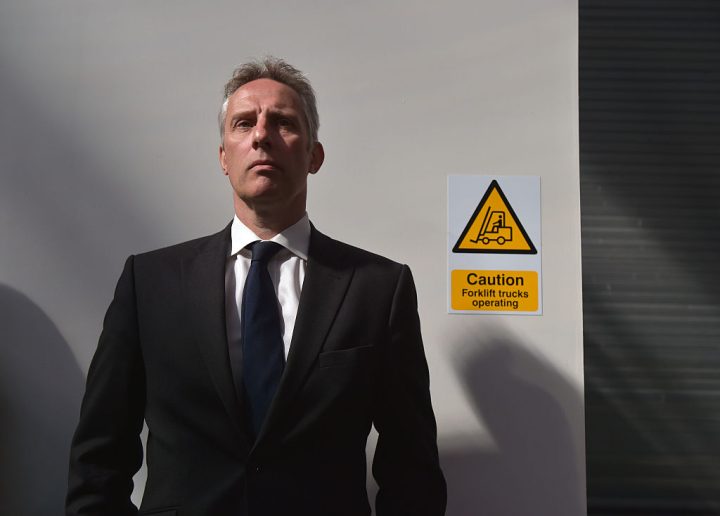The voters of Northern Ireland are used to being an impenetrable afterthought to most mainstream commentators in Britain. The general election has, however, delivered a series of enormous shocks, many of which are in danger of being overlooked. One of those is that Sinn Féin has seven Members of Parliament and is, for the first time in Northern Ireland’s history, the largest party at Westminster. But that is at best nuanced, and at worst misleading. The deeper story is the crisis facing unionism.
Sinn Féin, founded in 1905 when A.J. Balfour was still prime minister, and for many years the political wing of the Provisional IRA, held the seven seats it won at the last general election. It fended off potential defeat in ultra-marginal Fermanagh and South Tyrone by a greater majority than expected, and has increased its share of the vote across Northern Ireland to 27 per cent. That, however, is slightly lower than its tally in the 2022 elections for the Northern Ireland Assembly, at which it won 29 per cent. Given the party’s poor showing in the European Parliament elections in Ireland last month, it could have been worse.
The unionist vote across Northern Ireland is now fragmented
Of course, Sinn Féin MPs do not take their seats in the House of Commons, as they will not swear the oath of allegiance pledging them to ‘be faithful and bear true allegiance to His Majesty King Charles, his heirs and successors, according to law’. The cause of a united Ireland is represented at Westminster only by the Social Democratic and Labour Party (SDLP), which returned its two MPs, Colum Eastwood (Foyle) and Claire Hanna (Belfast South and Mid Down). But the underlying statistics are telling: in terms of vote share, Sinn Féin and the SDLP only won 38.1 per cent, more or less the same as in 2019 (with a shift to the former from the latter).
The Democratic Unionist party (DUP) has been the dominant force in unionism since it overtook the Ulster Unionist party in 2001. Although it concluded a deal with the UK government to join the devolved administration at Stormont in February, it has suffered heavy blows since then: its leader, Sir Jeffrey Donaldson, resigned in March after being arrested in relation to allegations of historic sexual offences (he was sent for trial on Wednesday). Last night, its share of the vote dropped to 22 per cent from more than 30; at the same time, Ian Paisley Jr, the son of the party’s founder, lost his North Antrim seat to the hard-line Traditional Unionist Voice leader Jim Allister by 450 votes. Paisley and his father before him had held the seat since 1970. The symbolism is overwhelming.
Coming into the election, there was a spring in the step of the Alliance party, a non-sectarian organisation founded in 1970 which takes neither a unionist nor nationalist position on the constitution. Although it had only won a single seat, North Down, in 2019, it had high hopes in East Belfast, Lagan Valley and Strangford; in the 2022 assembly poll it finished third with 13.5 per cent of the vote. But it was not to be: Alliance lost almost two points, and while Sorcha Eastwood won Lagan Valley, its sitting MP, Stephen Farry, was defeated in North Down. The party also fell short in East Belfast and Strangford. Once again it sends a single representative to the House of Commons.
The unionist vote across Northern Ireland was just above 40 per cent, but is now fragmented. The DUP’s new leader, Gavin Robinson, defied expectations to hold his East Belfast seat, but he is now one of only five MPs from the largest unionist party, with Paul Girvan losing South Antrim to the UUP. However, Alex Easton, formerly of the DUP, won North Down as an independent unionist. The divided final tally of unionists, therefore, is five DUP Members, one UUP, one TUV and one independent.
That leaves a final approximate picture of 40 per cent unionist, 38 per cent nationalist and 15 per cent ‘other’ in the shape of the Alliance, with smaller parties making up the balance. In 2019, those figures were 42 to 38 to 17 respectively; in 2017, 46 to 41 to 8. Constructing a narrative from that data is not easy.
While the nationalist vote may have plateaued, unionism has lost ground and is now a house divided. The existence of a border in the Irish Sea under the Windsor Framework, allowing Northern Ireland access to the EU’s single market, has seriously split the cause. There is no obvious resolution.
We are a long way from a majority in favour of a united Ireland. Under the Northern Ireland Act 1998, a poll on unification would only be held at the direction of the secretary of state ‘if at any time it appears likely to him that a majority of those voting would express a wish that Northern Ireland should cease to be part of the United Kingdom and form part of a united Ireland’. Sinn Féin has not made an electoral breakthrough this week, but a modest improvement.
Over the next five to 10 years, unionism will have to find a positive case for the Union and show how it will make voters’ lives better day to day. Otherwise it risks momentum building for a united Ireland simply on the basis of change. Can unionists overcome their differences? Can they afford not to?








Comments